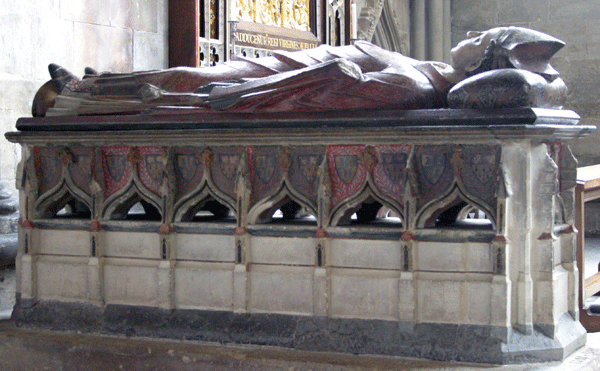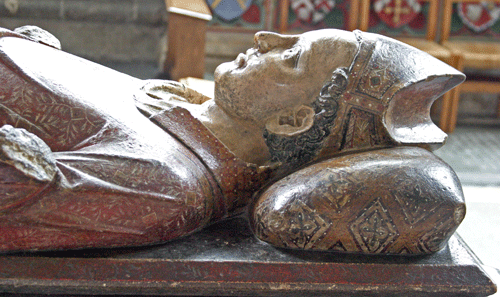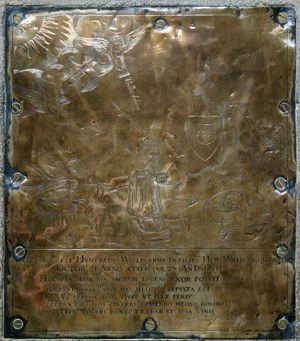SOMERSET - WELLS |
||||
 |
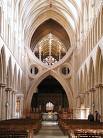 |
Wells Cathedral |
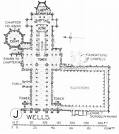 |
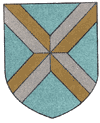 |
| Wells Cathedral - or, more properly, The Cathedral Church of St Andrew, is a Cathedral of the Old Foundation meaning that at the time of the Dissolution of the Monasteries it was presided over by a Dean and Secular Canons, that is, priests who did not follow a monastic rule. The see was founded in 909, moved to Bath in 1090 and to Bath and Wells in 1218. | ||||
| There is no entrance fee but voluntary contributions are welcome; there is a charge for photography. There is limited time street parking but better to park in a pay and display car park near the cathedral; cost is relatively high | ||||
Somerset Pages: <Somerset 1> <Somerset 2> <Somerset 3> <Somerset 4> <Somerset 5> <Somerset 6>
| North-East Transept - Corpus Christi Chapel | |
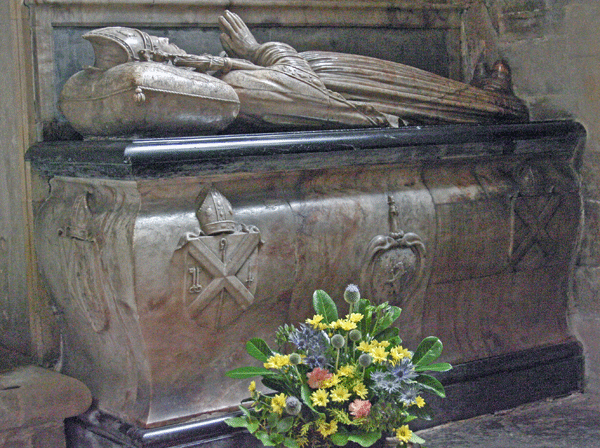 |
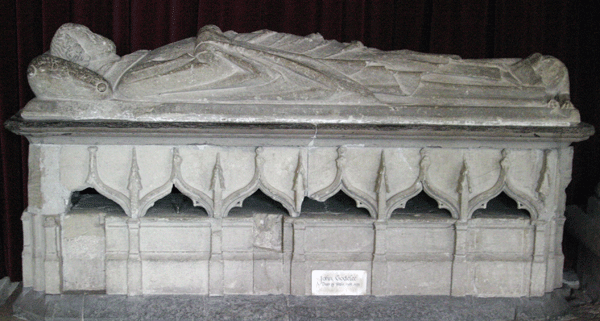  |
| Above: Bishop Creyghton (1672)
Alabaster Right Top: Dean Godelee (1333) Right Bottom: John Milton (1337) |
|
| South-East Transept | |||||
| St Katherine's Chapel | St John the Baptist's Chapel | ||||
|
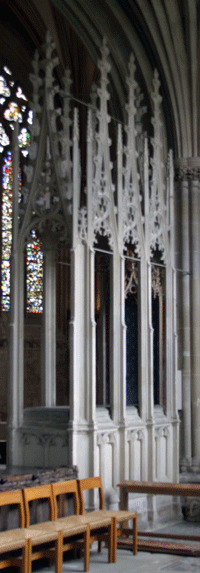 |
||||
| Top Row: Bishop Drokensford
(1309-1329) Bottom Row, Left to Right: Dean John Gunthorpe (1498)The arms to the left are of the Cathedral; Humphrey Willin (1618) Brass plate fixed to W Wall. By Robert Hadock Leaning figure with inscriptions |
Bishop Bitton (1264) or Canon John Martel (1343) | ||||
| The Saxon Bishops of
Wells shown below (East to West) were all made retrospectively
1220-30. They differ in detail rather than style. The
Easternmost (left) is said to be a little later. One is
not named and those without dates are not listed in The
Handbook of British Chronology. There is also a fine incised slab to Bishop Bitton II (1274) but as this is under glass I have not been able to photograph it at all satisfactorily. This is said to be the earliest incised slab in England. |
|
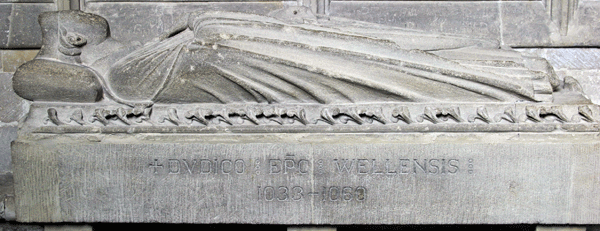 |
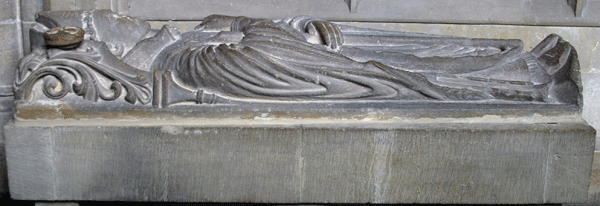 |
| Bishop Dudico (1033-1060) | Unnamed Saxon Bishop |
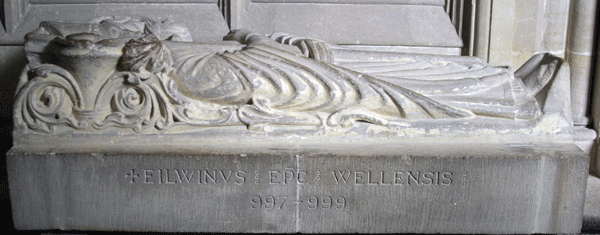 |
 |
| Bishop Eilwinus (997-999) | Bishop Burwoldus |
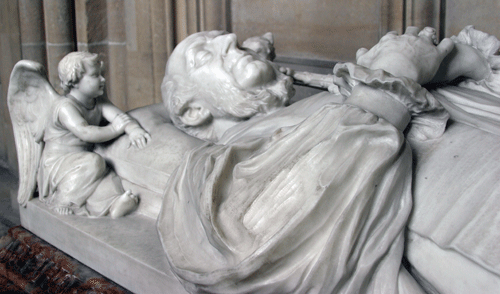 Bishop Lord Arthur Hervey (1894) He rests his feet on a snow leopard: the crest from his arms. Signed by Tho Brock RA Sculp London 1897 |
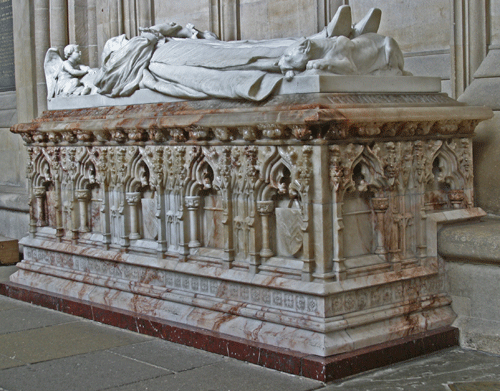 |
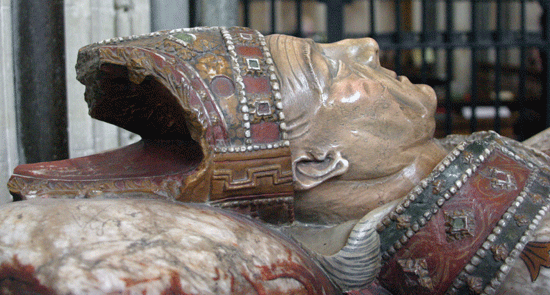 |
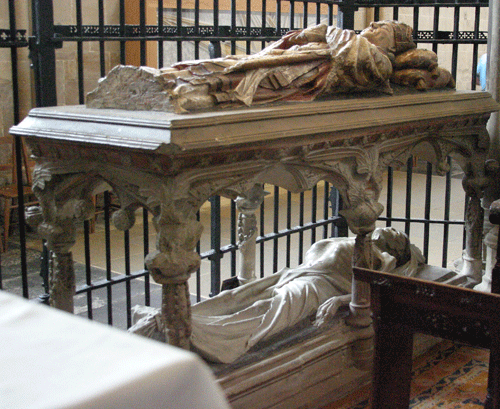 Above & Left Top: Bishop Bekynton (1443 - 1465) 15th century original iron railings protect this effigy/cadaver type tomb, which was built 15 years before his death. Original colour. Left Bottom: Bishop John Harewell (1386) Alabaster. Carved are two hares and ribbons of water - a rebus on his name. |
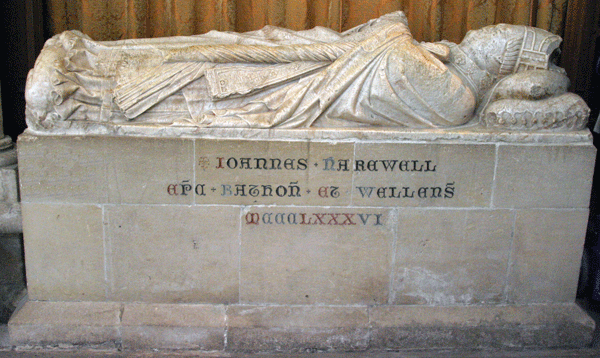 |
| More Anglo-Saxon bishops in the retrospective series (East to West) The easternmost one (left) is one of the later (c 1250), the other two part of the earlier series. Note the later ones have low mitres and rest their heads on pillows with no canopy | |||
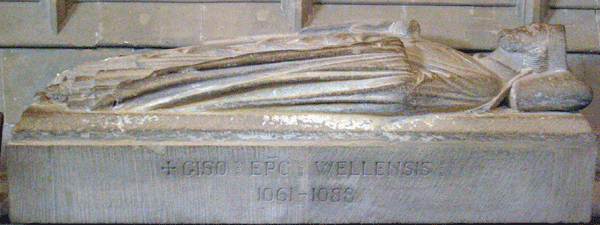 |
 |
||
| Giso of Lorraine (1061-1088) | Levericus | ||
 |
| Sigar (975-996) |
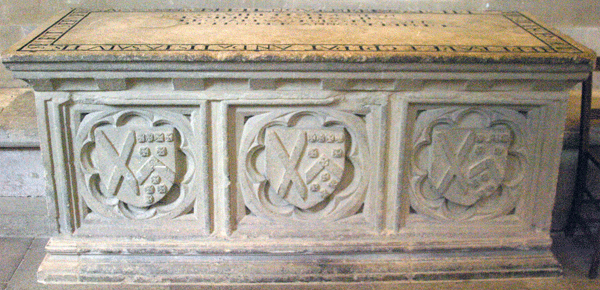 |
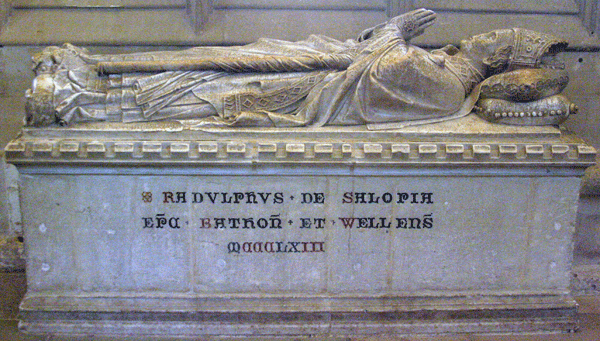 |
| Bishop Berkeley (1581) Tomb chest with shields - no effigy or brass indent. Inscription |
Bishop Ralph of Shrewsbury (1363) He established the College of Vicars. Alabaster |
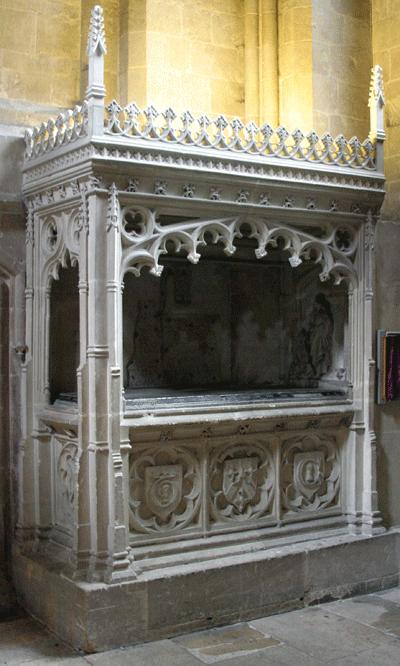 |
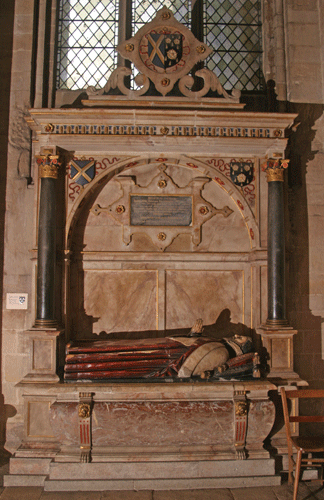 |
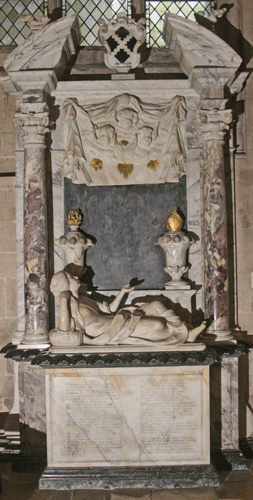 |
| Bishop Cornish (1513) Brass inscription. Matrix of brass figure on back |
Bishop John Still (1543- 1607) Alabaster. He was the unlikely author of a drinking song! |
Bishop Kidder (1703) The figure is that of his daughterr |
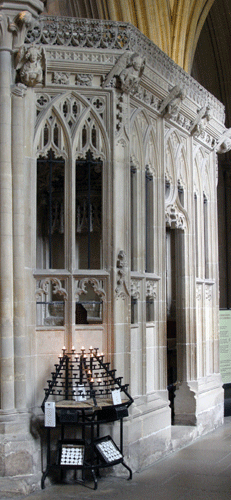 |
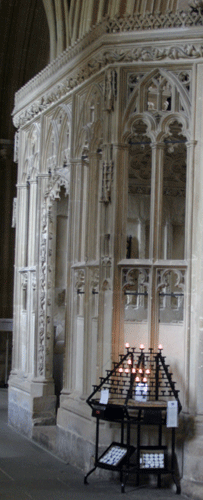 |
| Bishop Nicholas Bubwith (1407-1424) |
Treasurer Hugh Sugar (1489) |
| Chantry Chapels without tomb chests ot effigies | |
| South Transept |
| South-East or St Martin's Chapel and North-East or St Calixtus's Chapel |
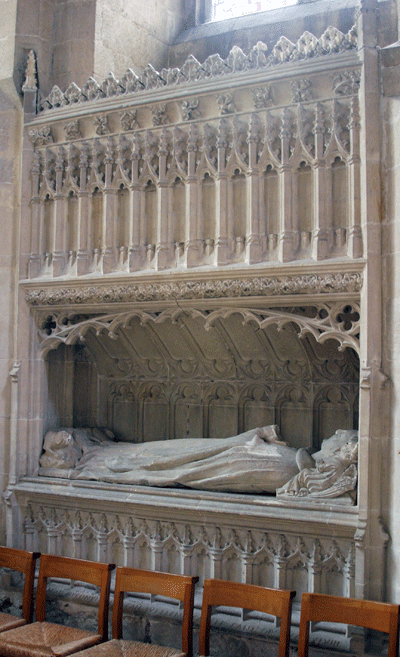 |
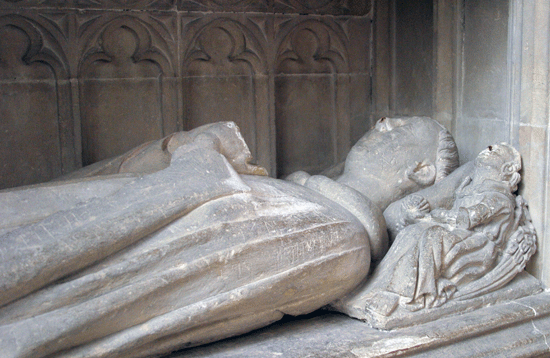 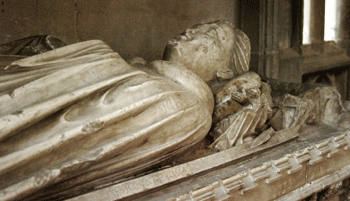 Left and Above Top William Byconyll (1448) Inscription (South-East Chapel) Right and Above Bottom:Dean Hussee (1302-5) or Precentor Thomas Boleyn (1470) Alabaster c. 1400. Stone canopy. Very fine sculpture on the tc: on the east, the Annunciation; on the west The Trinity (North-East Chapel) |
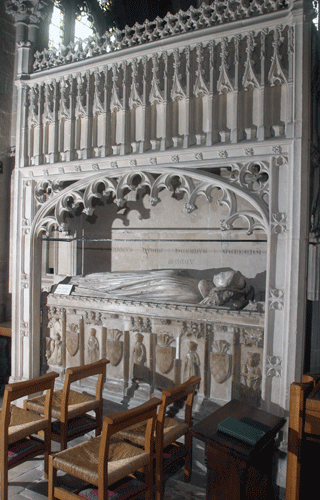 |
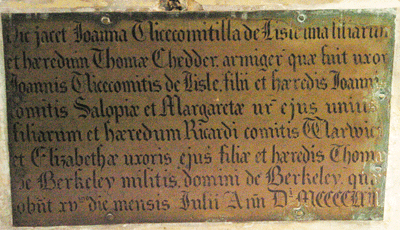 |
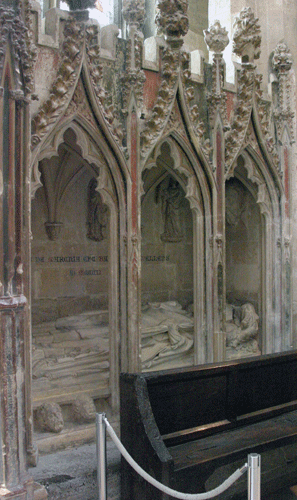 |
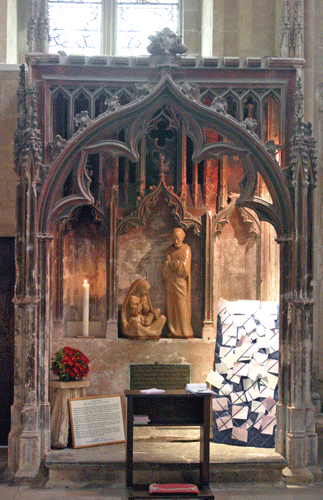 |
| Above:
Countess de Lisle (1406) brass plate afixed to the chantry altar
to record her burial here. Right and Far Right: Bishop William de Marchia (1302) To the right is a separate chantry altar |
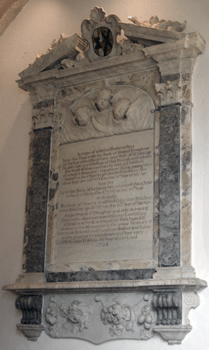 |
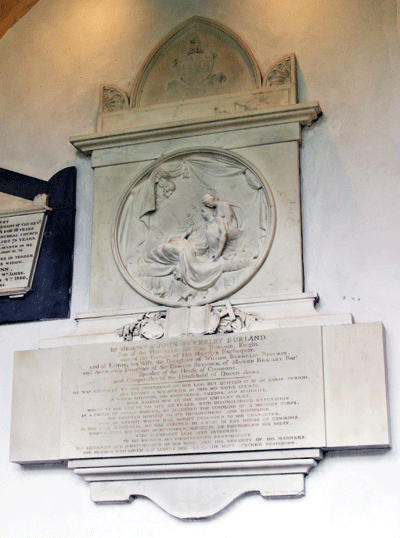 |
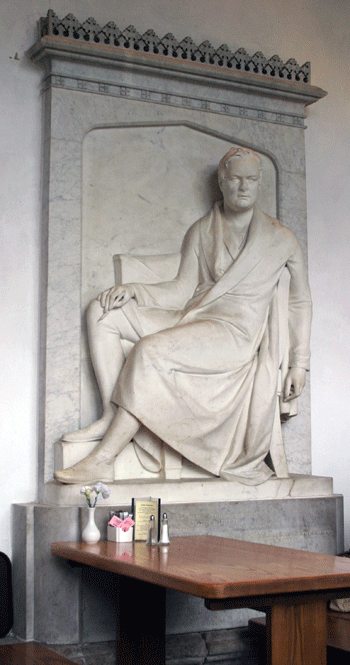 |
 |
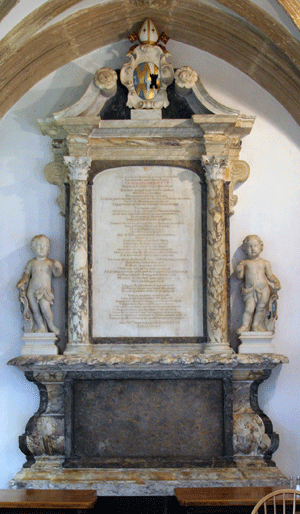 |
| Abigail Guilford (1726), daughter Rebecca (1716) & brother Charles (1707) | John Berkeley Burland (1804) By John Bacon Jn |
John Philips (1834) By Chantry, 1837 |
George Hooper (1727) By Samuel Tuffnel of Westminster |
